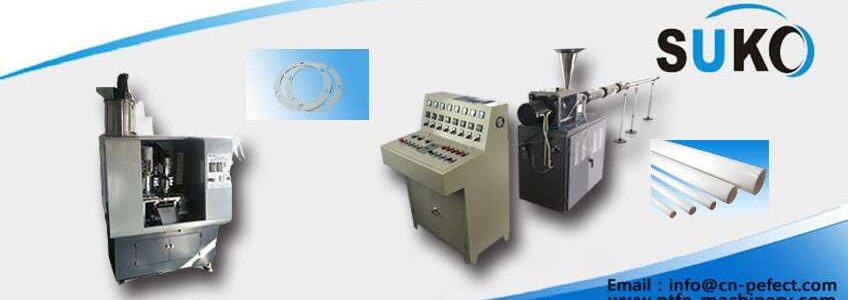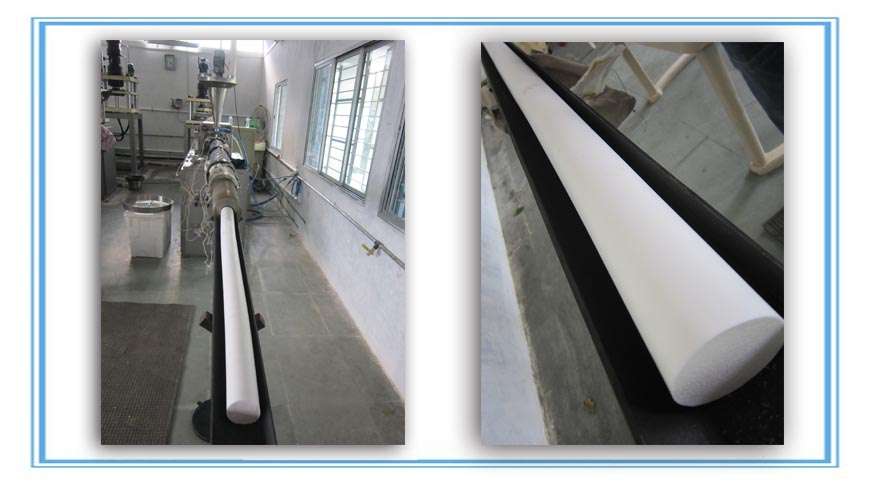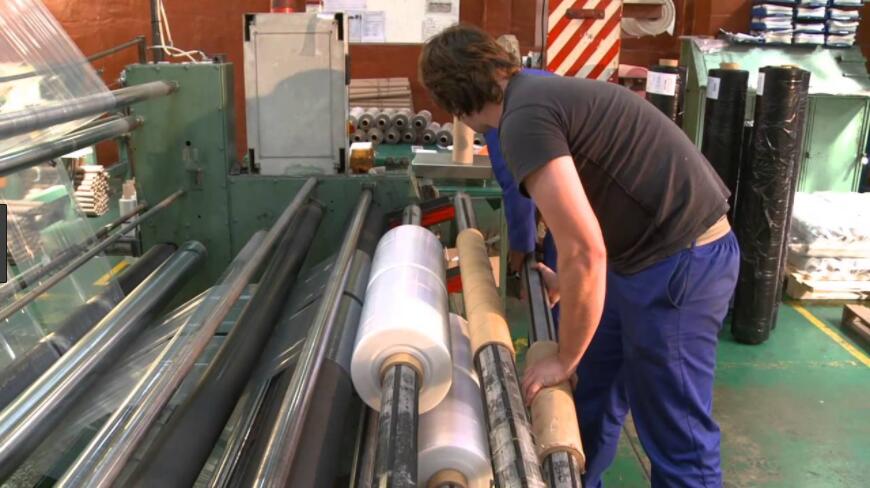By plasticizing, there are dry extrusion and wet extrusion processes and by pressurizing there are continuous and intermittent extrusion processes
Continuous production yields a high efficiency, simple operation for a wide range of applications, such as tubing extrusion, sheet/film extrusion etc.
Profile Extrusion
The Profile Extrusion process, such as drinking straws and medical tubing, is manufactured the same as a regular extrusion process up until the die. Placing a pin or mandrel inside the die extrudes hollow sections, and in most cases positive pressure is applied to the internal cavities through the pin.
Tubing with multiple lumens (holes) must use tooling made for specialty applications. For these applications, the tooling is made by placing more than one pin in the center of the die to produce the number of lumens necessary. In most cases, these pins are supplied with air pressure from different sources. This way, the individual lumen sizes can be adjusted by adjusting the pressure of the individual pins.
Co-Extrusion
Co-Extrusion is the extrusion of multiple layers of material simultaneously. This type of extrusion utilizes two or more extruders to melt and deliver a steady volumetric throughput of different viscous resins to a single die and extrude the resin in the desired form. This process can be used in a variety of extrusion processes (blown film, profile or sheet). The layer thicknesses are controlled by the relative speeds and sizes of the individual extruders delivering the materials.
There are a wide range of reasons why a manufacturer may choose co-extrusion over single layer extrusion. One example is in the vinyl fencing industry, where co-extrusion is used to tailor the layers based on whether they are exposed to the weather or not. Usually a thin layer of compound that contains expensive weather resistant additives are extruded on the outside while the inside has an additive package that is more suited for impact resistance and structural performance.
Extrusion Coating
Extrusion coating is used in a blown or cast film process to coat an additional layer onto an existing roll stock of paper, foil or film. For example, this process can be used to improve the characteristics of paper by coating it with polyethylene to make it more resistant to water. The extruded layer can also be used as an adhesive to bring two other materials together.
Sheet/film Extrusion
For products such as plastic sheet or film, cooling is achieved by pulling material through a set of cooling rolls, usually 3 or 4 in number. Running material too fast creates an undesirable condition called “nerve” which is basically inadequate contact time given to dissipate the heat present in the extruded plastic. In sheet extrusion, these rolls not only deliver the necessary cooling but also determine sheet thickness and surface texture.
Often co-extrusion is used to apply one or more layers on top of a base material to obtain specific properties such as UV-absorption, soft touch or “grip”, matte surface or energy reflection where it is needed.
A common post-extrusion process for plastic sheet stock is thermoforming where the sheet is heated until soft and then formed via a mold into a new shape. Thermoforming can range from line bended pieces to more complex shapes such as computer housings. These more complex forms which often resemble injection molded parts and can be attributed to the various possibilities in thermoforming, such as inserts, undercuts and divided molds.
Plastic sheet and film extrusion onto paper is the basis of the liquid packaging industry. Juice cartons, wine boxes as well as the food packaging industry utilize this process.
Blown film Extrusion
This process is used to manufacture plastic film for products such as shopping bags . Blown film is imilar to any regular extrusion until it reaches the die. The die is an upright cylinder with an annular opening similar to a pipe extrusion die. The molten resin is pulled upwards from the die by a pair of nip rolls high above the die. Changing the speed of these nip rollers will change the gauge or wall thickness of the film. Around the die sits a cooling ring that blows air onto the film tube as it travels past. The airflow cools the film as it travels upwards. In the center of the die is an air outlet trough which compressed air can be forced into the inside of the extruded cylindrical profile, adjusting the bubble volume. The film can then be slit, spooled, printed on or cut into shapes and heat sealed into bags or other items.
Compound Extrusion
Compound extrusion is a process that mixes one or more polymers with additives to create a plastic compound. The feed stock may be pellets, powder and/or liquids, but the product is usually in pellet form and used in other plastic-forming processes such as extrusion and injection molding. Machine size varies from tiny lab machines to the biggest extruders in the industry, running as much as 20 tons per hour, as used by the chemical companies that make base resins. Usually twin-screw extruders are preferred because they offer superior mixing at lower melt temperatures. Most of these have screws and barrels comprised of smaller segments (mixing, conveying, venting and additive feeding) so that the design can be changed to meet the production and product needs. Single-screw extruders can be used for compounding as well, especially with appropriate screw design and static mixers after the screw. Selection of the components to be mixed (viscosities, additive carriers) is as important as the equipment.




